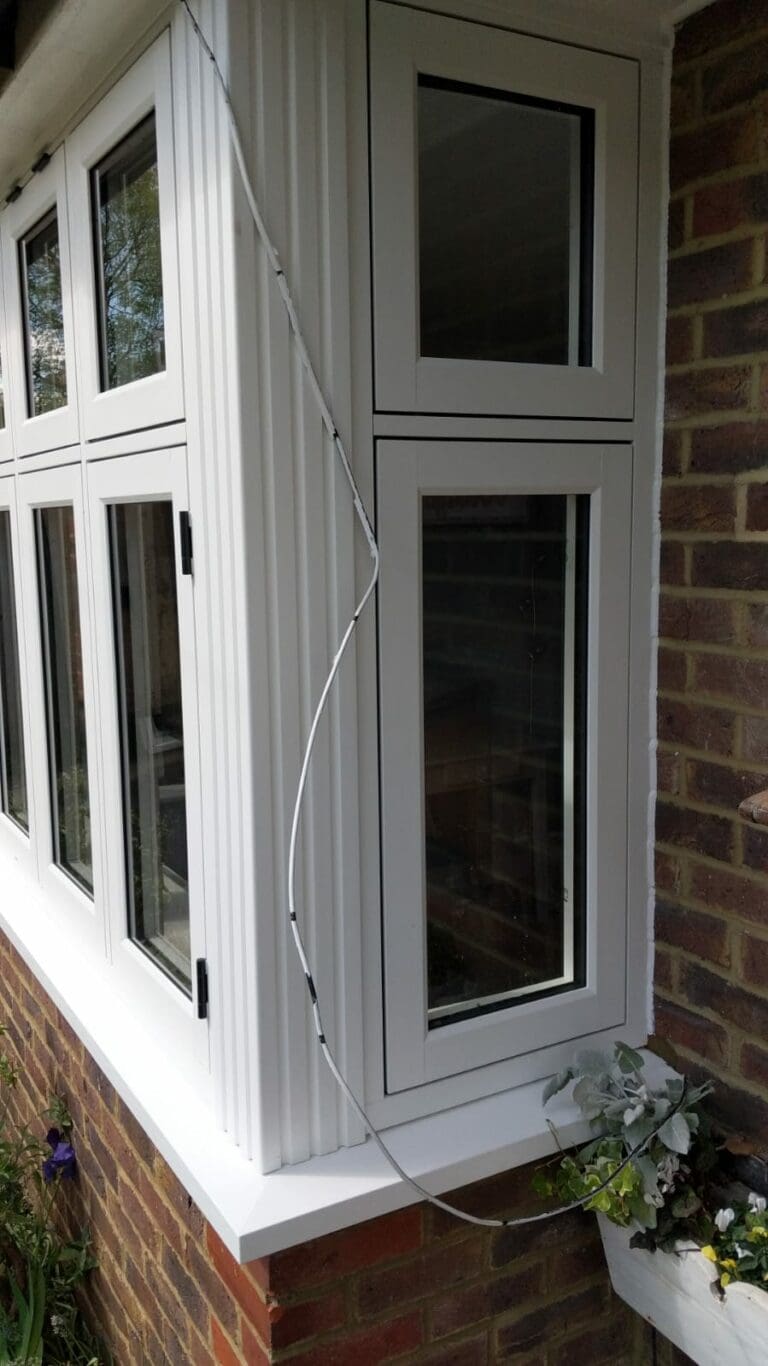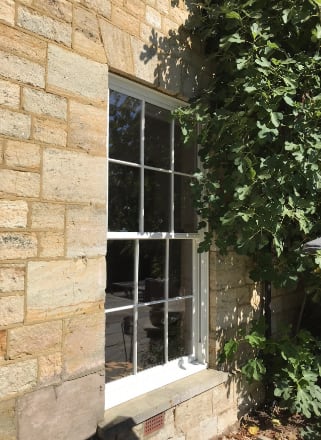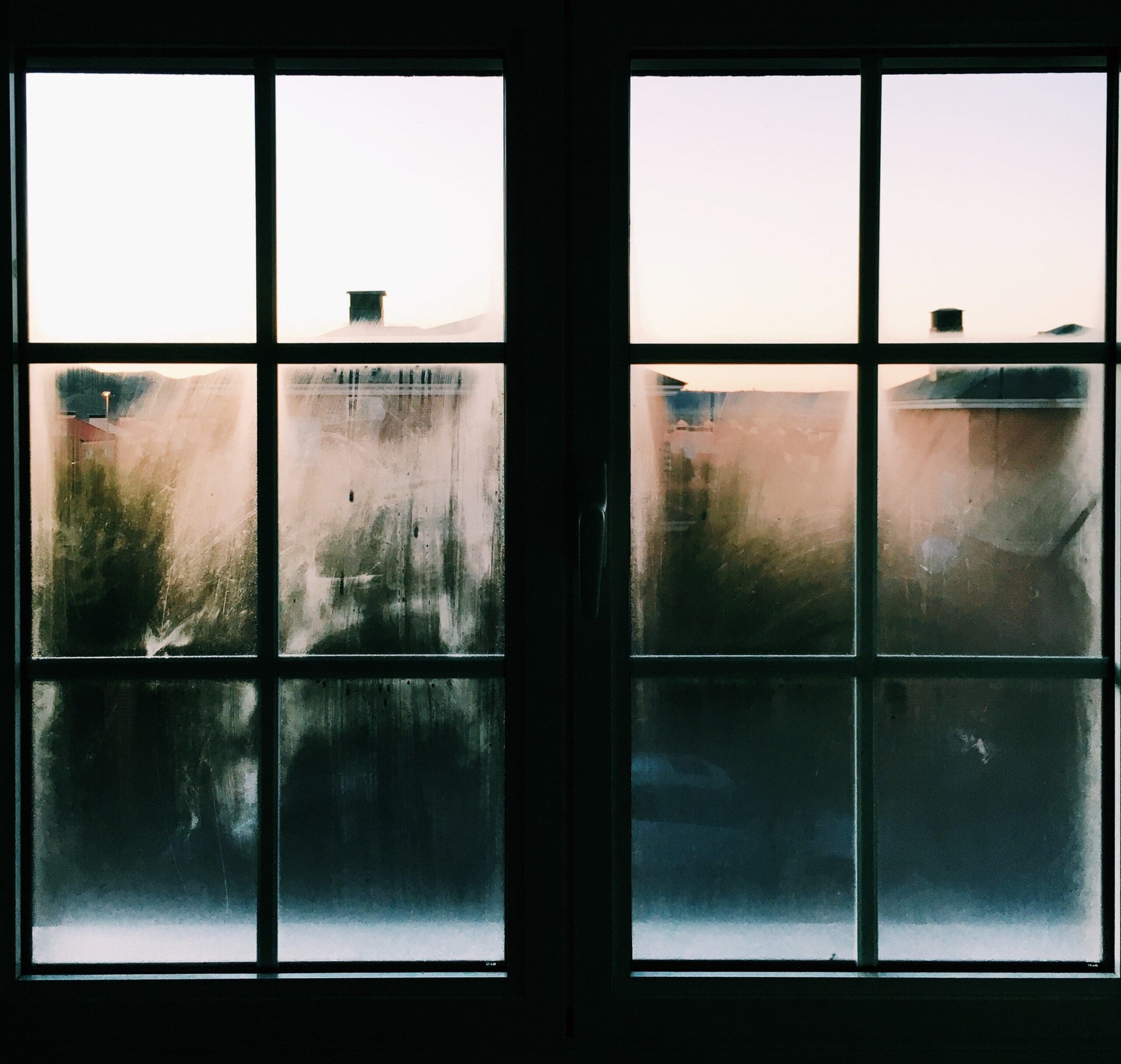Are you looking at installing new windows in your home and have come across two words we use on a daily basis here at The Milford Window Company?
Trickle vents are a small but mighty addition to windows, and have become something of a hot topic, not just for their functional benefits but also because they are now a legal requirement here in the UK.
Today we’ll cover everything you need to know about trickle vents, from their purpose and the legal aspects to exemptions and solutions for those concerned about how they look.

Understanding Trickle Vents
What are Trickle Vents?
Trickle vents, also known as background ventilators, are small openings integrated into window frames or sashes. They provide a continuous flow of fresh air into a room, even when the window or door is closed. GREAT news for the colder months!
These vents play a crucial role in maintaining indoor air quality by preventing condensation, reducing the risk of mould growth, and ensuring a healthy living environment.
The Legal Landscape
As of 2022, trickle vents became a legal requirement in the UK. Building Regulations now mandate their inclusion in new windows and doors to meet ventilation standards.
Rest assured, it’s not just another bit of arbitrary red tape and really does have the best interests of you and your home at heart. The primary aim of trickle vents is to enhance energy efficiency, reduce condensation issues, and improve overall indoor air quality, so really, they’re a no-brainer.
Exemptions: When Trickle Vents Aren’t Mandatory
While trickle vents are a legal requirement in most cases, there are exemptions that probably won’t surprise you. Have a look at the following to see if your home might warrant an exemption from installing trickle vents:
Listed Buildings: If your property is a listed building, you may be exempt from installing trickle vents to preserve its historical integrity.
Conservation Areas: Properties located in conservation areas may also be exempt, as local planning authorities often have specific guidelines to maintain the character of these areas.
Heritage Considerations: In some cases, heritage considerations or specific architectural designs may lead to exemptions.
Getting an Exemption
If you believe your property qualifies for an exemption, we’ll of course be able to advise you, but it’s also a good idea to consult with your local planning authority. They’ll assess your case based on the specific criteria and provide guidance on whether an exemption is applicable.
Ventilation Best Practices for Exempt Buildings
For buildings exempt from trickle vents, maintaining a healthy indoor environment requires a thoughtful approach. Without the regulatory nudge, consider incorporating practical strategies into your daily routine.
Strategically open windows during key times of the day to encourage natural airflow. Invest in efficient extractor fans or dehumidifiers for areas prone to moisture, like kitchens and bathrooms. Even introducing indoor plants not only adds aesthetic appeal but also contributes to air quality.
Don’t Like The Look of Trickle Vents?
Blending In with Your Style
One common concern homeowners express about trickle vents is their impact on the overall look of windows. Fortunately, there are strategies to address these concerns without compromising ventilation:
Coloured Vents: first and foremost, trickle vents are available in various colours to match your window or door frames seamlessly, so really won’t be all that noticeable.
Concealed Vents: If you are still hesitant, manufacturers such at The Residence Collection offer trickle vent covers that are extremely discreet. These covers maintain the functionality while minimising their visual impact.
Trickle vents are more than just a regulatory requirement – they are a valuable addition to your home that promotes a healthier living environment and really should be celebrated! While the law mandates their inclusion in most cases, exemptions do exist for specific circumstances, so it’s always worth checking.
If aesthetics are a concern, there are numerous options available to ensure that trickle vents seamlessly integrate into your home’s design.
In embracing trickle vents, homeowners not only comply with regulations but also invest in the long-term well-being of their property and the health of those within. It’s a breath of fresh air, quite literally.

